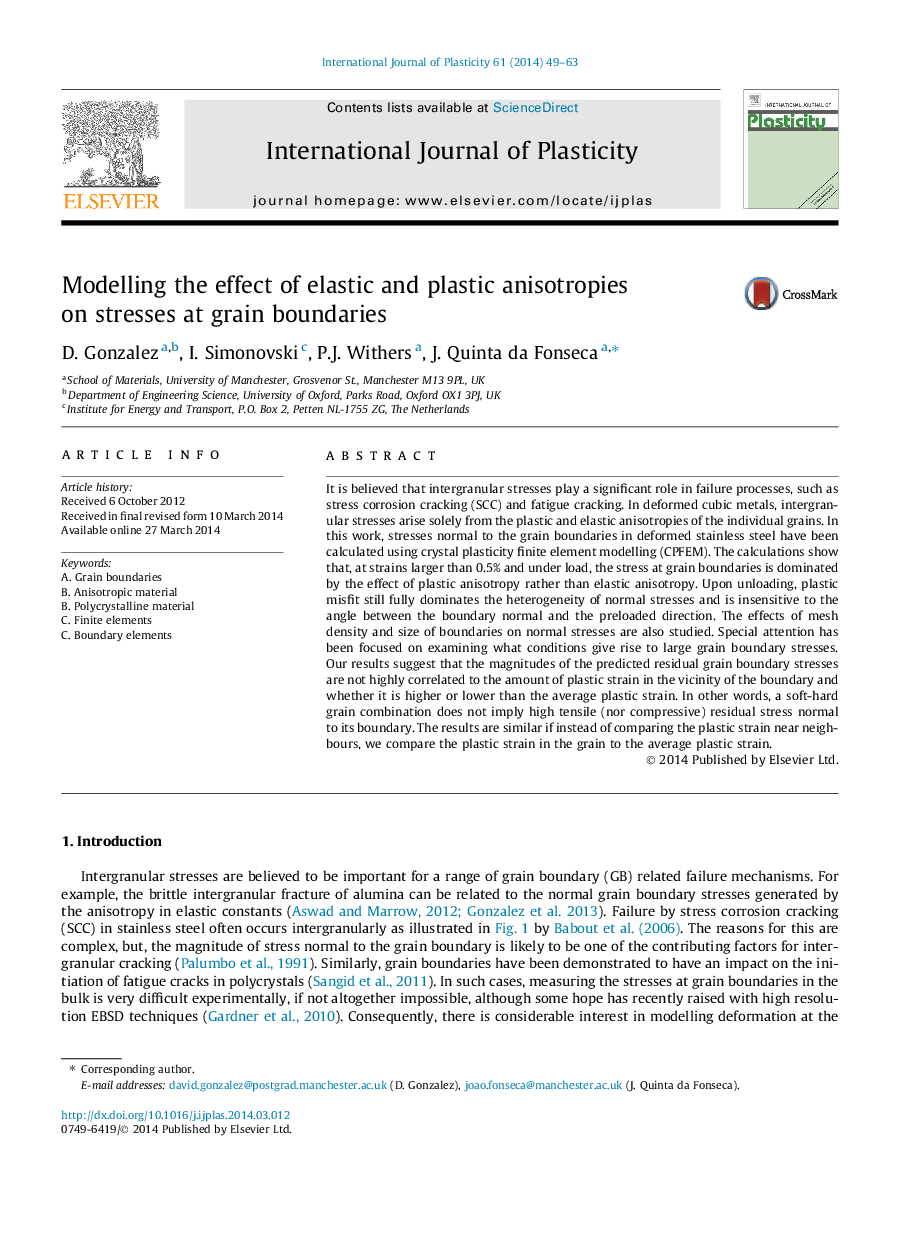| کد مقاله | کد نشریه | سال انتشار | مقاله انگلیسی | نسخه تمام متن |
|---|---|---|---|---|
| 786123 | 1465612 | 2014 | 15 صفحه PDF | دانلود رایگان |
• We use crystal plasticity to model the stresses at grain boundaries in a polycrystal.
• These are dominated by plastic (rather than elastic) anisotropy after 0.5% strain.
• On unloading, plastic anisotropy still fully dominates the boundary stress.
• Further, boundary stress is unaltered by the angle formed by the boundary and the loading direction.
• Still on unloading, boundary stress is unlinked to the plastic strain of the adjacent grains.
It is believed that intergranular stresses play a significant role in failure processes, such as stress corrosion cracking (SCC) and fatigue cracking. In deformed cubic metals, intergranular stresses arise solely from the plastic and elastic anisotropies of the individual grains. In this work, stresses normal to the grain boundaries in deformed stainless steel have been calculated using crystal plasticity finite element modelling (CPFEM). The calculations show that, at strains larger than 0.5% and under load, the stress at grain boundaries is dominated by the effect of plastic anisotropy rather than elastic anisotropy. Upon unloading, plastic misfit still fully dominates the heterogeneity of normal stresses and is insensitive to the angle between the boundary normal and the preloaded direction. The effects of mesh density and size of boundaries on normal stresses are also studied. Special attention has been focused on examining what conditions give rise to large grain boundary stresses. Our results suggest that the magnitudes of the predicted residual grain boundary stresses are not highly correlated to the amount of plastic strain in the vicinity of the boundary and whether it is higher or lower than the average plastic strain. In other words, a soft-hard grain combination does not imply high tensile (nor compressive) residual stress normal to its boundary. The results are similar if instead of comparing the plastic strain near neighbours, we compare the plastic strain in the grain to the average plastic strain.
Journal: International Journal of Plasticity - Volume 61, October 2014, Pages 49–63
